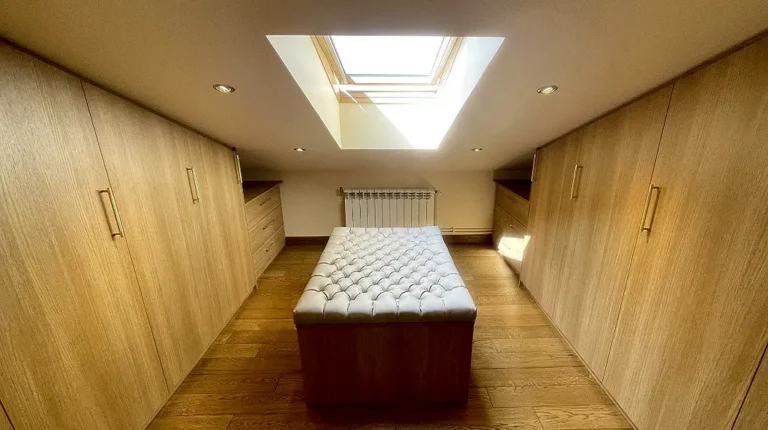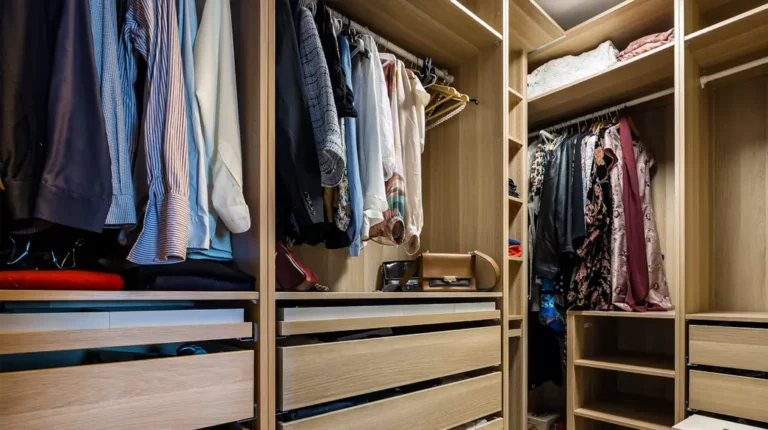What’s Worth the Investment? What’s Not?
Sliding wardrobes are a great addition to any home, offering sleek storage and maximising space. But when it comes to budgeting, where should you invest, and where can you cut costs without sacrificing quality? Some choices will impact durability and functionality more than others. Spending wisely from the start prevents future headaches.
Invest in High-Quality Doors and Tracks
The doors are the most visible part of your wardrobe. They take daily wear, so they must be sturdy.
- Material Matters – MDF, glass, or mirrored doors are popular, but the thickness and finish make a difference. Thin, low-quality materials can warp over time.
- Strong Track System – The sliding mechanism is crucial. Cheap tracks may cause sticking or misalignment. Opt for reinforced aluminium or steel for longevity.
- Soft-Close Features – A small upgrade, but a game-changer. Soft-close doors prevent slamming, making the wardrobe feel premium.
Cutting costs here leads to frustrating doors that jam, rattle, or feel flimsy.
Don’t Overspend on Interior Fittings
A well-designed wardrobe interior improves storage efficiency. However spending excessively on unnecessary extras can drive up costs.
- Basic vs. Custom Shelving – Standard shelving works for most storage needs. Fancy compartments and pull-out sections add cost but may not be essential.
- Drawer Depths – Deep drawers cost more but aren’t always practical. Shallow drawers for accessories and deeper ones for bulkier items strike a balance.
- Lighting Choices – LED strips inside the wardrobe are useful but don’t require high-end fittings. Motion sensor lights are a nice touch but can be added later.
Spend on well-planned storage, but skip overly complex add-ons unless they serve a real purpose.
Invest in Professional Installation
Proper installation makes all the difference. A poorly installed wardrobe will have alignment issues, wobbly doors, and inefficient space usage.
- Precision Measurements – Every home has quirks, like uneven floors or slightly slanted walls. Professionals adjust the design accordingly.
- Wall and Floor Adjustments – Skirting boards and carpets can interfere with track placement. An expert ensures a solid base.
- Guaranteed Workmanship – A warranty-backed installation prevents issues down the line. Cheap, rushed fitting jobs often lead to misalignment and door malfunctions.
DIY or budget installations may seem cheaper but often lead to costly repairs.
Save on Handles and External Features
Handles, trims, and external details can add up quickly. Unless they serve a practical function, they’re an easy place to cut costs.
- Minimalist Designs – Handleless doors give a sleek, modern look without the added cost of designer handles.
- Basic Mirror Options – Mirrored doors enhance space but don’t need premium glass. Standard mirrors offer the same effect.
- Paint Finishes – Luxury coatings add cost but don’t always improve durability. A solid, mid-range finish is often just as good.
Keep it simple. A wardrobe should look great but also serve its purpose without unnecessary extras.
Final Thoughts
A well-designed sliding wardrobe is a balance of investment and cost-saving choices. High-quality tracks, doors, and installation are non-negotiable. Storage interiors and external features offer flexibility for budget adjustments. Want expert guidance on getting the best wardrobe for your budget? Let’s plan a design that works for you.





